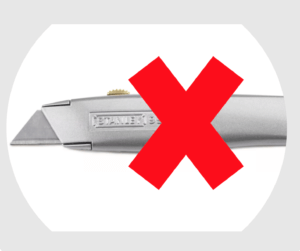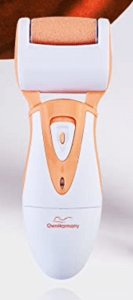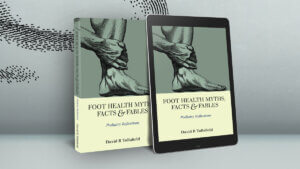Can we joke about corns, hard skin and all that?
For some, they can tell the weather forecast and this appears to be the case when nerves serve as a barometer for the shift in air pressure. In actual fact this concept is more prevalent around amputation of toes; the sort of phantom toe idea. One friend of mine had his fifth toe removed and could tell when the weather was about to change.
Any podiatrist can tell you that when undertaking house calls, the pet dog seems to have an affinity for eating skin shavings following the process of layer reduction (debridement). There appears no rhyme or reason, but the same will go for nail chippings. The passion for keratin seems to attract them, but then we know dogs eat many things that humans would find disgusting!
My favourite story comes from space
Scott and Don had been in space for 300 and 365 days respectively. Their blogs recorded interesting experiences. Because astronauts are not walking around on the ground under the force of gravity they don’t have to wear shoes in space.
“The calluses on your feet in space will eventually fall off so, the bottoms of your feet become very soft like newborn baby feet. But the top of my feet develop rough alligator skin because I use the top of my feet to get around here on space station when using foot rails.” Scott Kelly
“After about two months in orbit your feet molt, and like some reptilian creature the callused skin on the bottom of your foot sheds, leaving soft pink flesh in its place, in the weightless environment, calluses apparently have no use, at least on the bottoms of your feet. However, the tops of your feet become red-rubbed raw and gnarly. And the bottom calluses shed faster than the top calluses can grow. Perpetually raw and hypersensitive, your foot tops can use a bit of padding to ease the pain.” Don Pettit.
A protein called keratin
It might be said that dogs eat skin and nails because of the protein, for that is what the essential structure is made from. Keratin is like a high class polish and repels everything from water to bugs which try to penetrate the body. It is a barrier. But what of nails as a weapon? Would you argue with a rhinoceros? Doubtful, but those horns are made from keratin not ivory as in elephant tusks. Nails are functional on the hand but now of less use in feet.
Loose skin
Skin sheds its cells (squames) every 14-28 days depending upon your skin type and age and other factors associated with skin conditions. If you rub the skin below the ankle bones (malleoli) as an adult, you will feel a rough build up as you rub. The area of loose skin builds but disappears after a vigorous scrub. It is important therefore to rub vigorously to remove loose skin squames. In the disabled elderly, and those who cannot reach their feet, scaly reptilian like areas can make unpleasant viewing.
Are there nerves in corns?
Corns do not have nerves, neither do nerves grow into corns. Corns are made from the dense protein cells called keratin and have no blood supply. Therefore, corns are not vascular either. This misnomer is often taught at professional level. If you remove a so called neuro-vascular corn all the way below the fat, and I am not saying one does this at home, and put it under a powerful microscope, no nerves will be found. I have spent 40 years looking for evidence and have found none.
In 1845 surgeon chiropodist Lewis Durlacher wrote about this phenomenon and for over 150 years the myth still lives on. The confusion arises because the deeper tissue may have foreign material such as an old splinter, or the skin may be infected by viral infection (warts) which cause the area to bleed and take on the sensation of nerve pain. The neuro-vascular corn perhaps could assume the name based on this complex appearance that deceives the clinician.
It is interesting to note that Durlacher who had some very wonderful ideas about treatment and defined corns thus: festered, vascular, soft and hard corns. Many older notations could be found in my first year notes in 1975 thankfully we have modernised a bit and even classified corns and callus.
Mixing our English words
Callus is a noun meaning a localised thickening of the skin and a verb meaning to form a localised thickening of the skin. Callous is closely related to CALLUS, but it’s figurative—that is, it doesn’t describe actual skin—and it is never a noun. as an adjective, it means ‘toughened’ or ‘unfeeling’. As a verb, it means to make or become callous. English lesson over!

Tales of horror – never use sharp blades to cut out corns
Should we cut callus or corns?
To make life simple I will describe two types of callus.
- (A) physiological callus that develops with exercise and foot position
- (B) pathological callus, meaning that the skin and deeper layers have become faulty.
Ideally trimming callus to reduce this bulk can be conducted but it is better to try to find a reason why both arise. In many cases, the group in (A) will disappear if pressure is removed, deformity is corrected or an activity ceases. There is no evidence that cutting callus makes it grow as the layer from which skin cells develop is based on a pressure feedback system. Why not remove all pressure? Fly into space maybe with Scott and Don?
Corns form over bone prominences after injury to the skin. The sole of the foot, known as the epidermis, has the thickest layer of skin cells in the body. This makes sense as it is the first contact with the ground and we walk many miles in a lifetime. When pressure builds up, the skin adapts forming callus which is different to corns. Corns are more seed like and this is how they acquired the name ‘corn’. Mind you dogs like eating these!
Surgically removing corns is one idea and relevant for the sole rather than the toes. Hammer toe surgery is highly successful. If the toe is flatter the skin settles and this is in effect a cure. Cutting into the sole does work but not all of the time. A straight cut does not work and a skin flap has to be created to cover the full extent of the hole made so new fat replaces old damaged fat and inflamed scarred in tissue. Such actions should only be used as a last resort as success rates range from 40-70%, although much pain can be eradicated with surgery even if the corn returns. Long term, follow up has never been presented. ConsultingFootPain regards long-term as over 5 years
If the corn is infected, forms an abscess or a verruca , then surgery can play an effective part. Freezing, heat – including microwave, laser are all fair approaches to effect a cure.
Do corn plasters work?
Podiatrists deal with corns and callus more than any other professional. The intractable plantar keratoma is the most painful kind of keratin-based lesion. If the skin is hard and it needs softening, then keratolytic pastes are chosen as corn plasters. Keratolytics are chemicals that breakdown keratin; the -lytic part of the word, derived from lysis, means breaking down. A felt pad filled with salicylic acid (40%) paste will break down the corn, working on the cellular bonds called desmosomes.
Sharp blades
A scalpel in the right hands can reduce surface skin faster without the lengthy wait or risks of pastes which can cause unnecessary damage. However, not all corns are simple. Cross-sections through tissue from surgically removed corns often highlight inflammatory changes. These types of corn are unlikely to clear because a) the changes are too chronic, and b) there is a pre-existing fixed toe deformity.
Hard skin with a crusty centre can be associated with organised sacs called cysts set deep in the tissue of the foot. The fallacy that surface management alone can provide effective treatment is misleading. Timpson considered the effectiveness of debridement as being short-lived. In reality, most debridement is only effective between 2 days and one month.
Dealing with complex skin problems in feet falls outside pedicure and a professional clinician with medical knowledge should be consulted.
Corn plasters can work by softening the bulk of skin that builds. The use of a scalpel is more effective. Corn plasters seldom do more than soften the surface. New established corns will benefit from corn plasters as long as the deeper tissue is not damaged or infected with viral tissue. Factual evidence suggests that long term use of plasters does yield benefit. However, corns are not just derived from the skin alone and all the variables cannot be accounted when using this product.

There is no doubt that people have been reported using ‘Stanley knives’ as a method of removing callus. The question is can this be done safely? No matter what podiatrists advise, and while outlets sell sharp apparatus, then such instruments will be used, occasionally causing accidents.
There are two viewpoints:-
The first is never use anything sharp that will cut because it is easy to slip. Remember advertisements are designed to make self-treatment look easy. Many people find techniques that can be copied are not always as simple to execute in practise. Feet are notoriously difficult to reach and even eyesight plays a factor. The second viewpoint is related to cleanliness. Blades should be sterilised after each use. Disposable blades are the industry standard.
Can abrasives be used?
 Simple skin that has little depth without complicated blemishes can be reduced with soft abrasive sponges, hand files or rotary drums (shown above). The cheese slice blades are equally dangerous although less so than open blades. It is better to stay safe and consult a clinician trained to manage feet. If the skin is hard and has no difference in colour throughout, as long as circulation is sound, and the individual has no compromised health such as diabetes, then a rotary drum or abrasive sponge is a safe option.
Simple skin that has little depth without complicated blemishes can be reduced with soft abrasive sponges, hand files or rotary drums (shown above). The cheese slice blades are equally dangerous although less so than open blades. It is better to stay safe and consult a clinician trained to manage feet. If the skin is hard and has no difference in colour throughout, as long as circulation is sound, and the individual has no compromised health such as diabetes, then a rotary drum or abrasive sponge is a safe option.
Where the callus has different colours, think of a map of the sea seen from above with different hues of colour – green and blues – then do not attempt much more than surface reduction. Chronic callus is complicated and has different levels where small capillaries are easily damaged
Check list.
- Check your foot each time you shower or more often if you don’t
- Use a hand held mirror for the sole if you cannot bend
- Any thickened areas should not be painful. Leave alone if this is helpful but if not pumice after a shower or use an abrasive drum of file to reduce bulk.
- Painful areas may be a wart or foreign body from something trodden on. Seek help.
- Corns under a year are easier to manage.
- Insoles can be useful but do not cure long standing corns or callus
- If you use caustic skin products do so after seeking advice.
![]()
- [1] Durlacher, L A Treatise on corns, bunions, the diseases of nails: and the general management of the feet. Simpkins, Marshall & Co pp 64-74
- [2] Saipoor, A, Maher, A, Hogg L. A retrospective audit of lesion excision and rotation skin flap for the treatment of intractable plantar keratosis. The Foot. 2018;34:23-27 https://www.sciencedirect.com/science/article/pii/S0958259217301232?via%3Dihub
- [3] Timpson, S, Spooner, S K A comparison of the efficacy of scalpel debridement and insole therapy in relieving the pain of plantar callus. British Journal of Podiatry. 2005, 8(2):53-59
- [4] Lopez, FM, Kilmartin, TE. Corn Cutting in the 21st Century. Podiatry Now. 2016.19(10):24-27
- [5] Stephenson, J, Farndon, L, Concannon, M. Analysis of a trial assessing the long-term effectiveness of salicylic acid plasters compared with scalpel debridement in facilitating corn resolution in patients with multiple corns. J. Derm. 2016;43:6 https://doi-org.libaccess.hud.ac.uk/10.1111/1346-8138.13203
Read my latest article on an unusual ‘corn’ over the tendon of the great toe 14/10/22 
Thanks for reading “Musings about corns and callus” by David R Tollafield
Adapted from Foot Health Myths, Facts & Fables published 2021 and available from Amazon books

Sign-up for here my regular FREE newsfeed
Published by Busypencilcase Communications. Est. 2015 for ConsultingFootPain



Trackbacks/Pingbacks